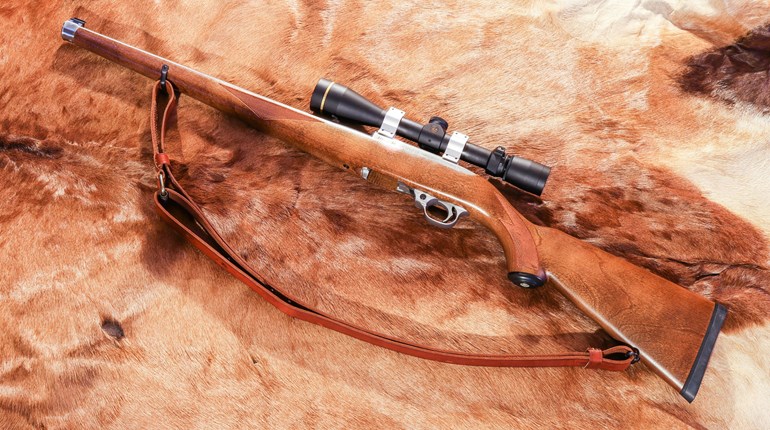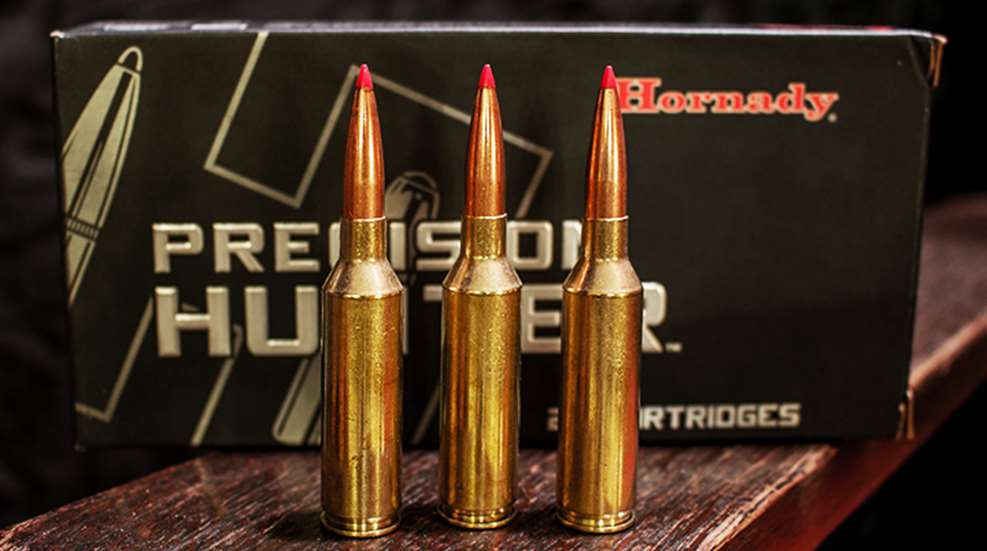
In the world of target cartridges, the 6.5mm bore diameter has made quite the splash, with sales increasing every year. The 6.5x55 Swede and 6.5x54 Mannlicher Schoenauer proved themselves over a century ago, and the .264 Winchester Magnum and 6.5 Remington Magnum did their best to keep the torch lit, but it wasn't until the last couple of decades that six-five was on everyone’s lips.
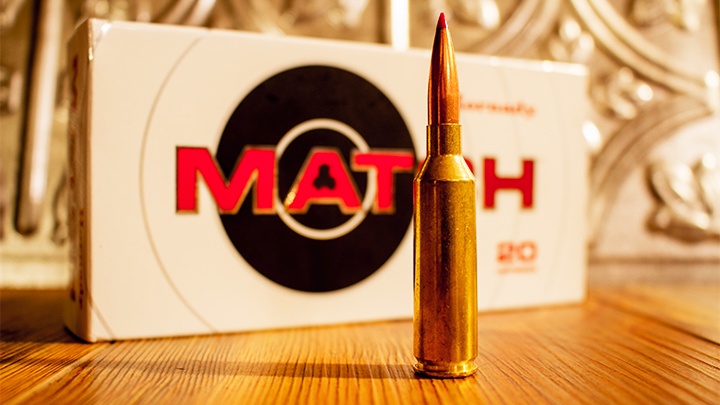
The .260 Remington—based on the .308 Winchester—and the now-famous 6.5 Creedmoor showed the shooting world the true potential and long-range benefits of the high Ballistic Coefficient bullets in 6.5mm, and though it took a while for the masses to come around to it, there’s no denying that the bore diameter is here to stay.
Hornady played a large part in that popularity, releasing their 6.5 Creedmoor in 2007, but that wasn’t Hornady’s first attempt at cartridge design. Collaborations with Ruger resulted in a family of unique cartridges, starting with the .375 Ruger. Using a beltless design which shares the same 0.532-inch diameter base as the Holland & Holland family of cases, the .375 Ruger was deigned to equal or better the velocity of the venerated .375 Holland & Holland Magnum. The .375 Ruger uses the 30-degree shoulder to headspace the cartridge, and is a wonderful choice to cover the larger game species.
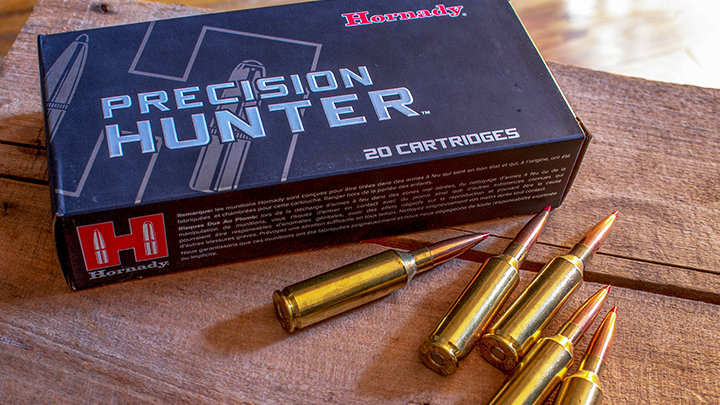
Building on the success of that cartridge, Hornady shortened the case to 2.10 inches, and necked it down to hold .308-inch diameter bullets, resulting in the .300 Ruger Compact Magnum; it was designed to compete with the .300 Winchester Magnum. To say that the .300 RCM hasn’t really caught on may be an understatement (that belted .300 Winchester remains a very popular choice), but just as the Hornady-designed .30 T/C sired the 6.5 Creedmoor, the .300 RCM is the parent of the 6.5 Precision Rifle Cartridge (PRC).
Envisioned as the big brother to the 6.5 Creedmoor, the 6.5 PRC uses a short magnum configuration to give a velocity advantage of about 250 fps over the 6.5 Creedmoor, making it a perfect choice for the Precision Rifle Series competitions. The 6.5 PRC retains the 30-degree shoulder of its parent, with a case length of 2.030 inches and an overall length of 2.955 inches. Though the 6.5 PRC has that ‘short magnum’ profile, I haven’t experienced a single feeding issue with the cartridge.
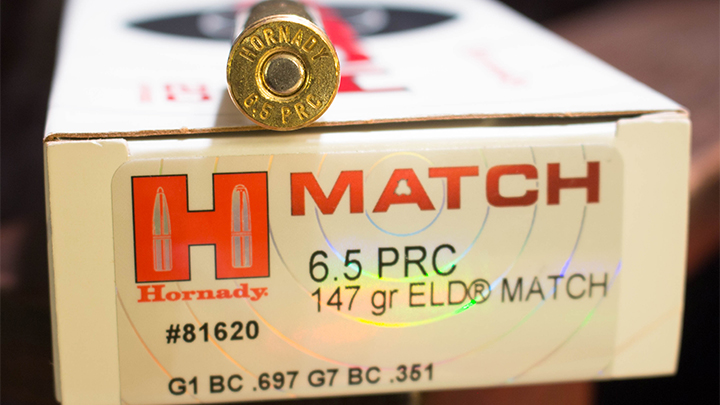
While it certainly shines on steel and paper targets out past 1,000 yards, it also makes one helluva hunting cartridge. The 143-grain ELD-X and 147-grain ELD Match bullets from Hornady’s factory loads provide about as good a one-two punch as you could ask for in a single rifle. The 143-grain ELD-X leaves the muzzle at 2960 fps, and offers a velocity and trajectory very similar to the 180-grain .300 Winchester Magnum loads, albeit with much less felt recoil. In the rifles I shot, I’d put the 6.5 PRC’s recoil on par with a stout .30-06; more than manageable for nearly all shooters, yet delivering an excellent blend of striking power and flat trajectory. With a 200-yard zero, the 143-grain Hornady load strikes 6.4 inches low at 300, and 18.2 inches low at 400. Should you feel confident enough to take shots at game at 500 yards, the 143-grain ELD-X will hit 36 inches low, still retaining over 1,700 ft.-lbs. of energy.
Hornady’s ammo is not the only choice out there; Nosler offers the 140-grain AccuBond, 142-grain AccuBond Long Range and the 120-grain E-Tip in their loaded ammunition, Federal has introduced a 130-grain load using their new Terminal Ascent bullet at 3000 fps and Choice Ammunition offers several different bullets in their lineup. That gives the hunter the choice of bonded core bullets, lead-free monometal bullets and standard cup-and-core bullets, though all are boat tails, and all have polymer tips.
Handloading the 6.5 PRC will open up the flood gates, giving the shooter a much wider selection of bullets, and you can equal or better the factory velocities. You’ll want a large rifle magnum primer, and slow burning powders like Alliant’s Reloder 22, 23 and 25, Hodgdon’s H4831SC and H1000, and IMR 7828. The 6.5 PRC will give the best velocity in a 24- or 26-inch barrel.
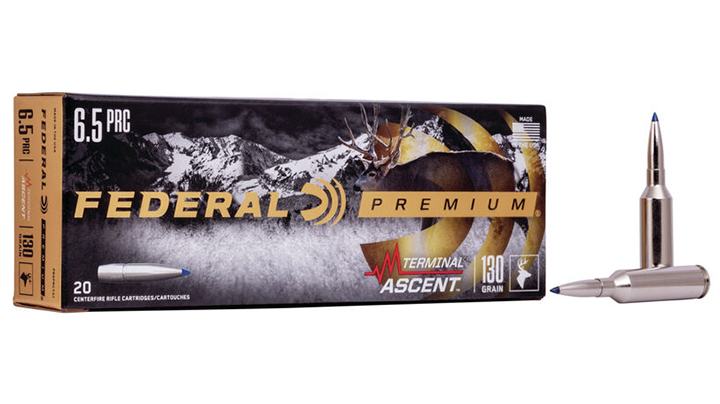
So where does the 6.5 PRC stack up against the other 6.5mm cartridges? Well, using the 140- to 143-grain bullet for comparison purposes, it sits just behind the 6.5 Weatherby RPM, and about 100 fps ahead of the 6.5-284 Norma. The 6.5-300 Weatherby Magnum will push a 140-grain bullet to 3315 fps, and the .26 Nosler will run at 3300 fps, and both are rather hard on barrels. At 2960 fps, the 6.5 PRC will give longer barrel life than the speed demons, while still offering a respectable amount of energy. I feel the 6.5 PRC is a sound choice for most North American game, shy of the brown bear and bison, if loaded with a stiff bullet of at least 140 grains.
There are a good number of rifles currently chambered for the 6.5 PRC, including models from Browning, Bergara, Mossberg, Ruger and Savage, not to mention the boutique builders. The fact that Federal included the cartridge in its ammunition catalog says a lot about the design; it is gaining popularity in the hunting fields as well as in the competitions. I found both the Hornady factory loads to be perfectly accurate, with both printing sub-MOA groups.
If you’re looking for a cartridge that will do double duty in both the hunting fields and on the target range, with a bit more horsepower than the Creedmoor provides, you could do a lot worse than the 6.5 PRC.
Looking for previous installments of our "Behind the Bullet" series? We've got you covered.
• .22 WMR
• .458 Winchester Magnum
• .22 Hornet
• .280 Ackley Improved
• .240 Weatherby Magnum
• .458 Lott
• .264 Winchester Magnum
• .348 Winchester
• .33 Nosler
• .260 Remington
• .30-30 Winchester
• .416 Rigby
• .358 Norma Magnum
• .22 LR
• 7mm-08 Remington
• 8mm Remington Magnum
• .338 Federal
• .224 Valkyrie
• .338-06 A-Square
• 9.3x62mm Mauser
• .257 Weatherby Magnum
• .45-70 Government
• .300 H&H Magnum
• .25-06 Remington
• .30-06 Springfield
• 6.5 Creedmoor
• .300 Remington Ultra Magnum
• 7mm Remington Magnum
• .470 Nitro Express
• .280 Remington
• .300 Winchester Magnum
• .270 Winchester
• .222 Remington
• .45 ACP
• .404 Jeffery
• .44 Remington Magnum
• .41 Remington Magnum
• .243 Winchester
• .338 Winchester Magnum
• .357 S&W Magnum
• 6.5-284 Norma
• 8x57 Mauser
• .38 Smith & Wesson Special
• 7x57mm Mauser
• 9 mm Luger
• .35 Whelen
• .454 Casull
• .375 H&H Magnum
• .45 Colt
• .22-250 Remington
• 10mm Auto
• .308 Winchester















